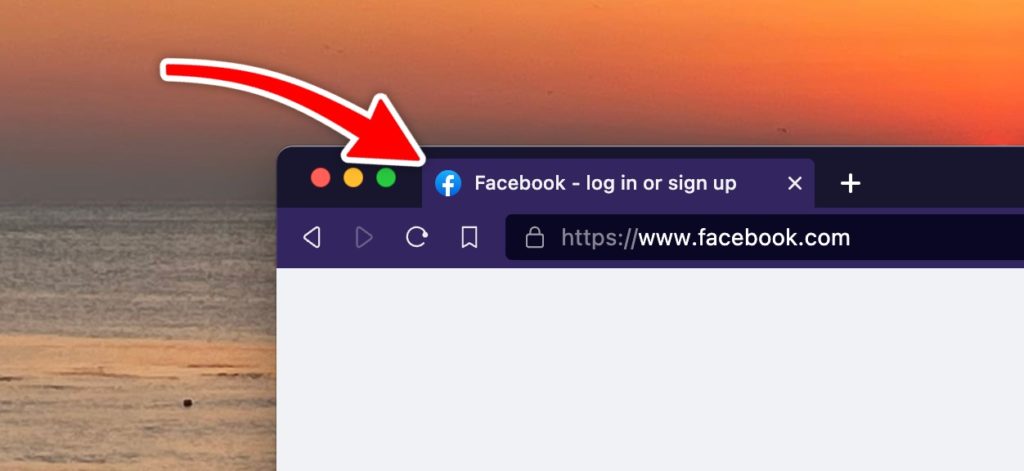Favicons have evolved from being just tiny icons to representing a brand’s digital face. They are crucial visual cues helping users identify and navigate websites amidst numerous browser tabs, bookmarks, and mobile app shortcuts.
The best method for setting up a favicon on your site is so create a 16px by 16px “favicon.ico” file in the root of your site for browsers that will request it. Then creating a larger PNG file (for example 128px by 128px) or SVG and setting it as your rel=”icon” file in your site’s meta. This will ensure older devices can use the favicon.ico file and newer browsers will have a high resolution version.
What is a Favicon?
A favicon, short for “favorite icon,” is a small image representing a website or brand. Displayed in the browser tab, bookmarks, and address bar, favicons enhance brand recognition and user experience.

Importance of a Favicon for Websites
A favicon strengthens brand identity in today’s competitive digital landscape. It helps improve user experience, especially on mobile devices. Additionally, a favicon can indirectly boost SEO efforts, as search engines like Google consider user engagement signals.
Favicon Sizes Explained
Favicons are essential for brand recognition and user experience. The standard sizes are 16×16 and 32×32 pixels. However, considering the variety of devices:
- Desktop browsers like Chrome, Firefox, and Safari: 16×16 or 32×32 pixels.
- Retina displays on tablets and smartphones: 64×64 or 128×128 pixels.
- Mobile devices: 48×48 pixels.
Since sizes can vary so much it’s best to create a favicon.ico file that is 16×16 in your site’s root. Then to set a vector SVG file (or high resolution PNG) as the rel=”icon” on your website so it’s scalable for devices that need a high resolution file.
<link rel="icon" href="img/favicon.svg" sizes="any" type="image/svg+xml">If you use a CMS like WordPress you can set the favicon in the Appearance > Customize menu. From here you can go to Site Identity and set a Site Icon which will be used as the favicon on most devices. Read here for more information about how to set a site icon in WordPress.
Best Practices for Favicon Sizes
Optimal Favicon File Formats
The two prevalent favicon file formats are ICO, PNG and SVG. While the ICO format is universally supported, PNG offers transparency and high image quality. It’s essential to provide an ICO fallback for broad compatibility.
Ensuring Favicon Scalability
Favicons should be scalable to remain recognizable across platforms:
- Use SVG (Scalable Vector Graphics) for scalable favicons.
- Provide multiple sizes, considering both standard and high-resolution screens.
- Test across various devices and browsers.
How to Create and Implement a Favicon
When designing a favicon, simplicity is key. It should align with your brand’s identity and be recognizable at various sizes.
Once designed, you can use online favicon generators to produce and save the necessary files. After generating, upload the favicon files to your website’s root directory and insert the appropriate HTML code, pointing to your favicon’s path. Additionally if you name the filename of your favicon as “favicon.ico” in the root of your site browsers will automatically be able to find it.
Common Mistakes to Avoid with Favicon Sizes
Avoid using low-resolution favicon images, as they can appear blurry. Ensure favicon compatibility across browsers and devices. Lastly, don’t neglect favicon accessibility; and ensure good color contrast.
Using Low-Resolution Favicon Images (Only 16×16)
One of the most common mistakes website owners make is using low-resolution favicon images. A favicon should be clear and crisp, even when displayed in a small size. Using low-resolution images can make your favicon appear blurry and unprofessional. This can negatively impact your brand’s image and make it difficult for users to recognize your website.
To avoid this mistake, ensure that your favicon image has a high resolution. Aim for a minimum size of 16×16 pixels, but consider using larger dimensions for better clarity. Additionally, use a favicon file format that supports higher resolution, such as .png or .svg. This will help maintain the quality of your favicon even when displayed in smaller sizes.
Ignoring Favicon Compatibility
Another mistake to avoid is ignoring favicon compatibility. Favicons should be compatible with different browsers and devices to ensure consistent branding across various platforms. Failure to consider compatibility can result in your favicon not displaying correctly or not displaying at all on certain browsers or devices.
To ensure favicon compatibility, test your favicon on different browsers, such as Chrome, Firefox, Safari, and Internet Explorer. Check how it appears on both desktop and mobile devices.
Neglecting Favicon Accessibility
Accessibility is a crucial aspect of web design, and this includes favicons. Neglecting favicon accessibility can have a negative impact on user experience and may even violate accessibility guidelines. Some common accessibility mistakes include using favicons with poor color contrast or not providing alternative text for screen readers.
To make your favicon accessible, ensure that it has a sufficient color contrast with the background color of the browser tab or toolbar. This will make it easier for users with visual impairments to distinguish your favicon. You can use a color contrast tester to ensure a correct contrast ratio for your favicon.
Conclusion
Favicons play a pivotal role in enhancing brand identity across browser tabs, bookmarks, search engine results, and mobile home screens. Adhering to the recommended sizes, like 16x16px and 32x32px, ensures clear display across platforms.
Creating a favicon is straightforward with tools like favicon generators or image editors. Ensure you have a favicon, as its absence can confuse users and affect search results. Ensure both the homepage and favicon file are accessible to search engines for optimal visibility. By following these best practices, you can optimize your favicon for both branding and navigation.